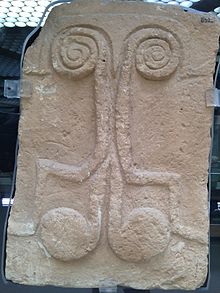Castelluccio culture
approximately) of the prehistoric civilization of Sicily, originally identified by Paolo Orsi on the basis of a particular ceramic style, in the homonymous village, between Noto and Siracusa.
[3] Castelluccio culture was present in the villages of south-east Sicily, Monte Casale, Cava d'Ispica, Pachino, Niscemi, Cava Lazzaro, near Noto, of Rosolini, in the rocky Byzantine district of coasts of Santa Febronia in Palagonia, in Cuddaru d' Crastu (Tornabé-Mercato d'Arrigo) near Pietraperzia, where there are the remains of a fortress partly carved in stone, and - with different ceramic forms - also near Agrigento in Monte Grande.
In the area around Ragusa evidence of mining by ancient Castelluccio residents has been found; tunnels excavated by the use of basalt tools allowed the extraction and production of highly sought flints.
[4] The oldest olive oil in Europe was made in Castelluccio over 4000 years ago, remains of which were found in a ceramic jar and other terracotta fragments in the 1990’s.
Researchers have identified traces of oleic and linoleic acids, which are the signatures of olive oil in the ceramic jar found during excavations at an archaeological site in Castelluccio di Noto in the 1990s.

